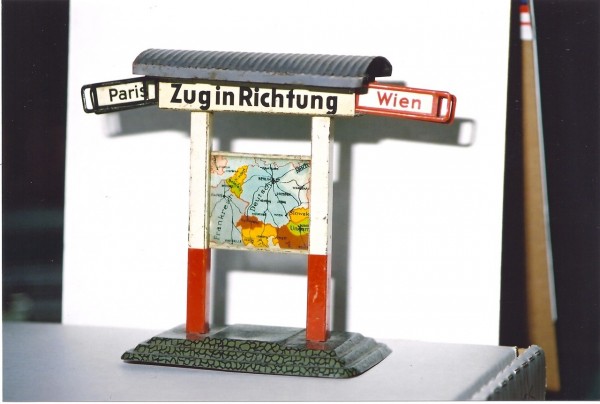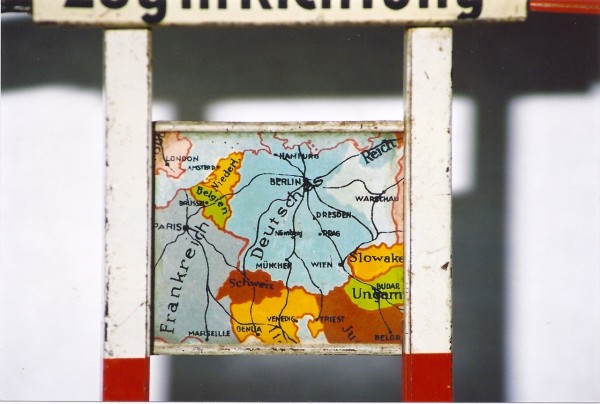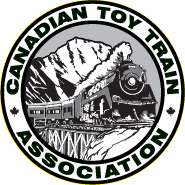Wartime trains
By Charles Reif, CTTA, TCA
Is it “Prewar” or “Postwar”?
With North American toy trains, that distinction has become a natural dividing line. This divide may be generational (I’m a postwar child, raised on 1950’s Lionel trains), but it’s also supported by the fact that the War was (particularly in North America) a design and manufacturing watershed.
Very generally speaking, “Prewar” brings to mind colourful Standard Gauge and O Gauge tinplate (by many makers), the streamlined passenger trains, and Lionel’s brief affair with wide-radius near-scale modelling. “Postwar” recalls the rise of plastic and the knuckle coupler, the arrival of Flyer two-rail S Gauge, and the proliferation of diesels and operating accessories. Yes, there were still steam engines, and metal casting. And tinplate items were still made by Lionel for a few years, and by Marx into the 50’s. Yet the “look” of trains had changed. And the rising popularity of HO lay in the background, eventually to help push the old train companies out of business.
In Britain and on the Continent, the wartime break in toy train production, oddly enough, caused less drastic changes (at least for those manufacturers who survived). A number of prewar O Gauge metal trains by Hornby, Bassett-Lowke, Marklin, or Jep in France, were almost identically produced for a time after the war, though never in as broad a range as before. Some even developed new O Gauge product. And the old European companies would be more successful in adapting to the demand for smaller gauges.
“Prewar” or “Postwar”. But what of “Wartime” trains? Was there a distinctive product made during World War II?
Many of us have heard of Lionel’s paper train, intended to fill the gap when other materials had been diverted to war industries. And Lionel’s wasn’t the only paper train offered during the war (as avid readers of the TCA Quarterly’s “Who done it?” columns might know).
Some have also read of Lionel’s proposed “Victoryliner” (a specially-painted Flying Yankee) that was apparently never produced. And the growing popularity of military trains (and toys generally) in the late 30’s, especially in those countries where militarism was on the rise, may have lasted until the toymakers’ factories themselves were diverted to the war effort.
In France, there were also “Occupied trains”, as Clive Lamming describes in his opus “Le Jouet de Paris”, a massive “art book” on the toymaker Jep. During the German Occupation, at least one French prewar steam train set was re-lithographed and re-lettered in German.
An interesting story to a tinplate accessory.
I recently acquired a piece which I thought to be of the same vintage, though clearly of German manufacture. It’s a lithographed tinplate destination board, composed of a curved roof on a central beam supported by two pillars on a grey base, with destination signs which slide out on either side of the beam. Destinations in black print are Hamburg, Paris, and Stuttgart, with Berlin, Nurnberg, and Wien (Vienna) in red. Between the columns is a metal notice board, with schedules on one side, and on the other a map. There is no maker’s mark visible.

It was the map that caught fellow-collector Robin Dodson’s eye. A quick look revealed that the “Deutches Reich” (Germany) seemed to occupy an unusually large part of Central Europe. I took my find home for later study.
Was this a “Wartime” accessory?
France was still there on the metal map, and not divided as in the Occupation period. Belgium and Holland were still distinct. On the other hand, Austria had been absorbed into the Reich, as had the Czech part of Czechoslovakia, with Slovakia a separate country. So this map must have been made after March 1939 (Hitler’s takeover of Czechoslovakia), but before the invasion and partition of France in June of 1940.
The key would be Poland. Armed with the Penguin Atlas of Recent History, I compared my little tin map. There was the post-WWI “Polish Corridor” to the port of Danzig on the Baltic Sea, cutting off historically German “East Prussia” from the rest of Germany. Did this mean that the invasion of Poland, in September 1939, had not yet happened?

But then I noticed that the Poland on my tin map did not extend nearly as far east as shown on the prewar atlas map, and where it stopped, another country began in red. We know that Hitler and Stalin made a pact in 1939, by which the eastern half of Poland was absorbed by the Soviet Union when Germany invaded from the west . Finally I noticed that, while the city of Warsaw was marked on the map, the distinctly coloured territory around it had no name. Poland did not exist on this map.
So there was the answer. Yes, I think this is a “Wartime” train item. It represents Europe between the fall of Poland and the invasion of the Low Countries and France.
Another way to put “history” into the history of toy trains.
Postscript:
After this article was published in the Jan 2004 TTOS Bulletin, the editor received a letter from reader Rodney Nebocat of New York, who argued that there would be no German-drawn railroad map including France between the declaration of war in September 1939 and the fall of France in June 1940, as no German passengers could travel to France while Germany and France were at war. Therefore, Mr. Nebocat said, the map on the accessory must be post-June 1940.
However, as the author has seen maps of Europe from the second half of 1940 that clearly show the partition of France (as created in the treaty of June 22, 1940), and the tin accessory’s map shows no such partition, the author holds to his previous conclusion.
